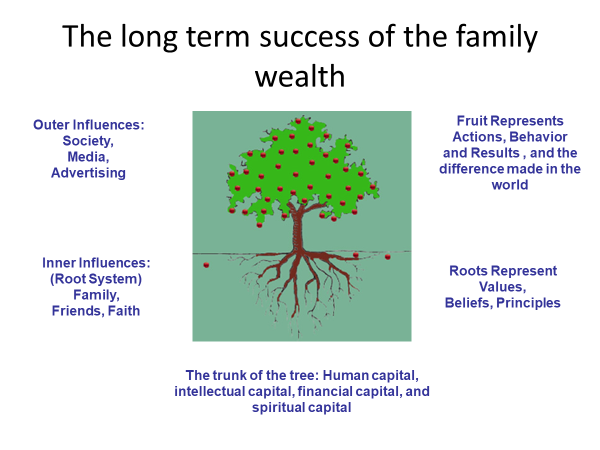
Many business owners are finding it difficult to retire or transition out of their business due to a lack of exit planning together with a challenging economic environment. Shrinking cash flow, net income and credit have forced owners into fight-or-flight mode.
Several companies have successfully compensated by trying to expand sales and cutting costs. Many small to mid-sized companies, however, have experienced a drop in value, with no end in sight.
Owners are also entering the chapter in their life when exiting their business in one way or another is becoming more probable. Unfortunately, the business may not be currently worth what they need it to be to successfully exit.
Or what very often happens, is the business owner wakes up one morning, so to speak, and decides that they don’t want to run the business anymore and often decides the fate of the business without any careful planning.
The reality is that selling or exiting a business, is probably the single most important decision an owner will make. Instead of blindly hoping to sell their business “one day,” an alternative is for the business owners formulate a thoroughly planned exit strategy in order to sell or transfer their business for maximum value or compensation in the most tax-efficient method.
Creating an exit strategy, a process which takes three to five years, is the most significant step a business owner can make. All businesses are different and all business owners are different, therefore the exit strategy must be integrated with the owner’s objectives and requirements.
Is it a “lifestyle” business that produces revenue which does not need to be sold? Can the business be transferred over to a family member or key employee, or will it be sold to a third party? If a business owner is entering the stage in life when they need to be planning their exit, here is what they should be attentive to:
Define Objectives
Before you formulate your exit strategy, you must know when you want to leave your business, to whom you want to leave it to and how much money you hope to get from the transaction. Formal retirement planning and the creation of a life goal statement should be the first steps in this process.
Ascertain Value and Cash Flow
Regardless of who you are selling your business to, if your payout will come from future cash flow, then future cash flow is more important than current value. You can use many reliable valuation methods to estimate your business’ value. A formal valuation can come later.
Build Value
This step decreases the risk linked to owning your own business and helps improve the outlook for future growth. Setting your business up to operate without you, through improving the dedication of key employees, systematizing your business to run on autopilot, expanding market share, diversifying revenue sources, and growing corporate leadership, can significantly increase your businesses value.
Establish a Successor
The process of transferring your business takes time the sale will continue even after the deal is confirmed because future payouts are usually necessary. The transaction is completed once the agreed price is fully paid. Careful planning is required to successfully manage a sale to insiders who frequently are short of the necessary capital for a total cash buyout.
Conserve Wealth
Selling your business will create income for you, your family and the Internal Revenue Service. Cautious planning must be employed to diminish taxes, and preserve the accumulated wealth.
Exiting a business is probably the most important decision a business owner will make. They usually only get to do it one time, and all of the many years of hard work, risk and dedication is being realize with one event.
Regardless if an owner is transferring it to an insider or selling it to a third party, careful planning and consideration must be taken over an extended period of usually 3 to 5 years. It is a process that is driven by the owner and accompanied by a team of advisors that may include their financial advisor, accountant, business attorney, estate planning attorney, and so on.
It is also important that one of the advisors is thoroughly experienced with the process and can help the owner along through the required steps.
Steven Zeller is a Certified Business Exit Planner, Certified Financial Planner, Accredited Investment Fiduciary, and Co-Founder and President of Zeller Kern Wealth Advisors. He advises business owners with developing exit plans, increasing business value, employee retention, executive bonus plans, etc. He can be reached at szeller@zellerkern.com
 Retirement can be an exciting milestone. It’s also a major lifestyle change. Oftentimes, your daily workday tasks (professionally or if you run your own business) will likely no longer exist.
Retirement can be an exciting milestone. It’s also a major lifestyle change. Oftentimes, your daily workday tasks (professionally or if you run your own business) will likely no longer exist. The most commonly stated goals of an exit plan for a business owner are to exit their business on their terms, to receive the highest possible value (or their desired value), and to do so in the most tax efficient manner. It takes time to implement the process to accommodate those objectives. When a business owner rushes to sell their business many things can be overlooked including how to set up the exiting transaction in a way that minimizes taxation.
The most commonly stated goals of an exit plan for a business owner are to exit their business on their terms, to receive the highest possible value (or their desired value), and to do so in the most tax efficient manner. It takes time to implement the process to accommodate those objectives. When a business owner rushes to sell their business many things can be overlooked including how to set up the exiting transaction in a way that minimizes taxation.
